An exhibition in Vicenza explores women's hairstyles of the Renaissance
The Gallerie d’Italia in Vicenza is hosting until April 7 the exhibition The Braids of Faustina. Hairstyles, Women and Power in the Renaissance, which addresses for the first time with a monographic slant a fundamental aspect of Renaissance art, culture, society and antiquarian studies: women’s hairstyles. Through a wide-ranging selection of works, from imperial to Renaissance busts, from paintings to sculptures, from ancient coins to modern medals, from drawings to printed volumes (with a final neoclassical appendix), an attempt will be made to reconstruct the fascinating and complex world of hair styles in the fifteenth and sixteenth centuries, the artistic possibilities they offered and their importance in Italian society and fashion.
The title recalls one of the most spectacular and famous hairstyles, that of Empress Faustina Major, wife of Antoninus Pius, who became a symbol of concord and conjugal love. Her bust, found in the most famous Renaissance antiquarian collections, both by artists such as Lorenzo Ghiberti and Andrea Mantegna and by patrons such as Lorenzo the Magnificent and Isabella d’Este, became a celebrated artistic model, and numerous copies and reworkings gave great visibility to the eccentric hairdo, which ended up being adopted by many women, especially in the Veneto region. The itinerary unfolds through six sections.
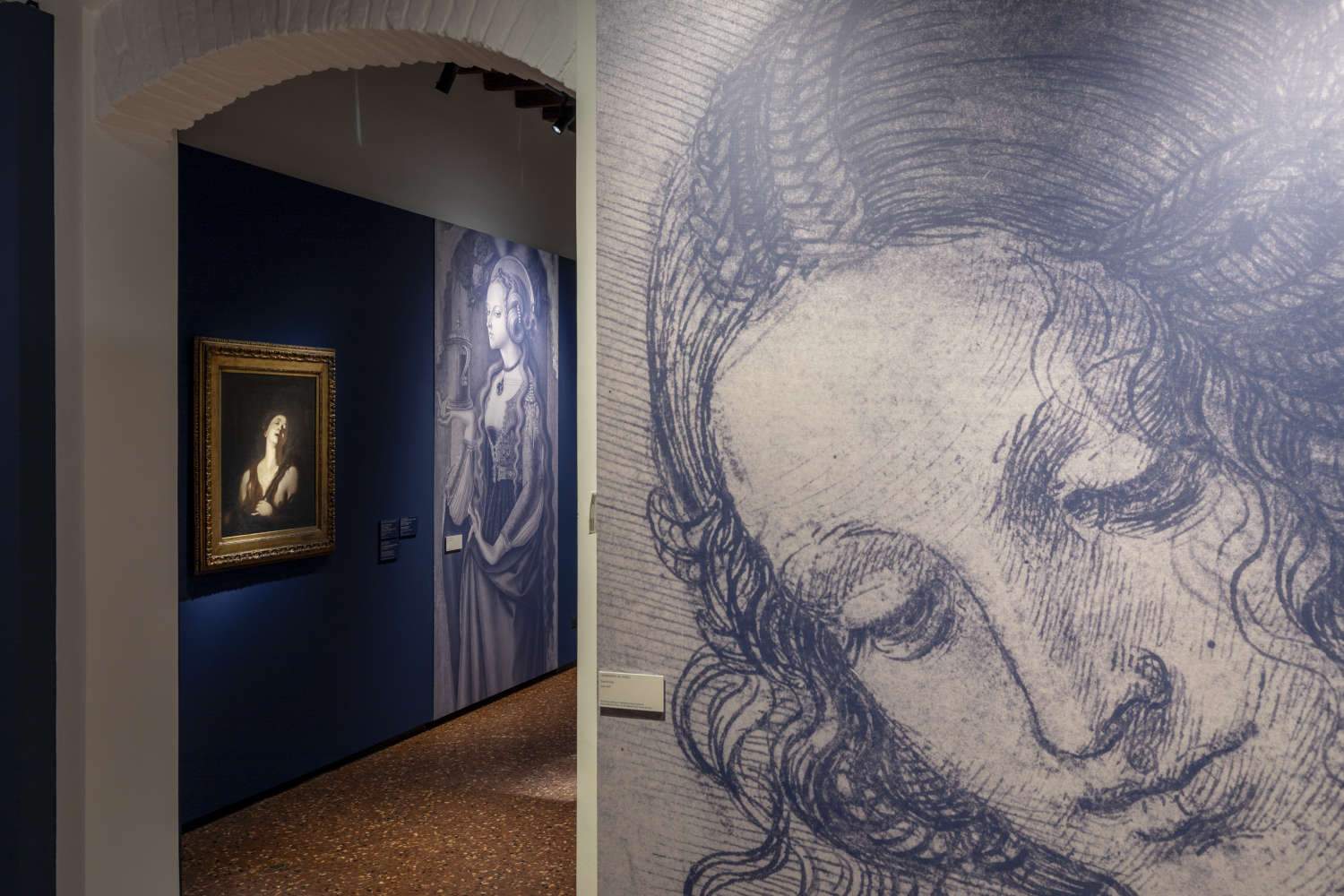
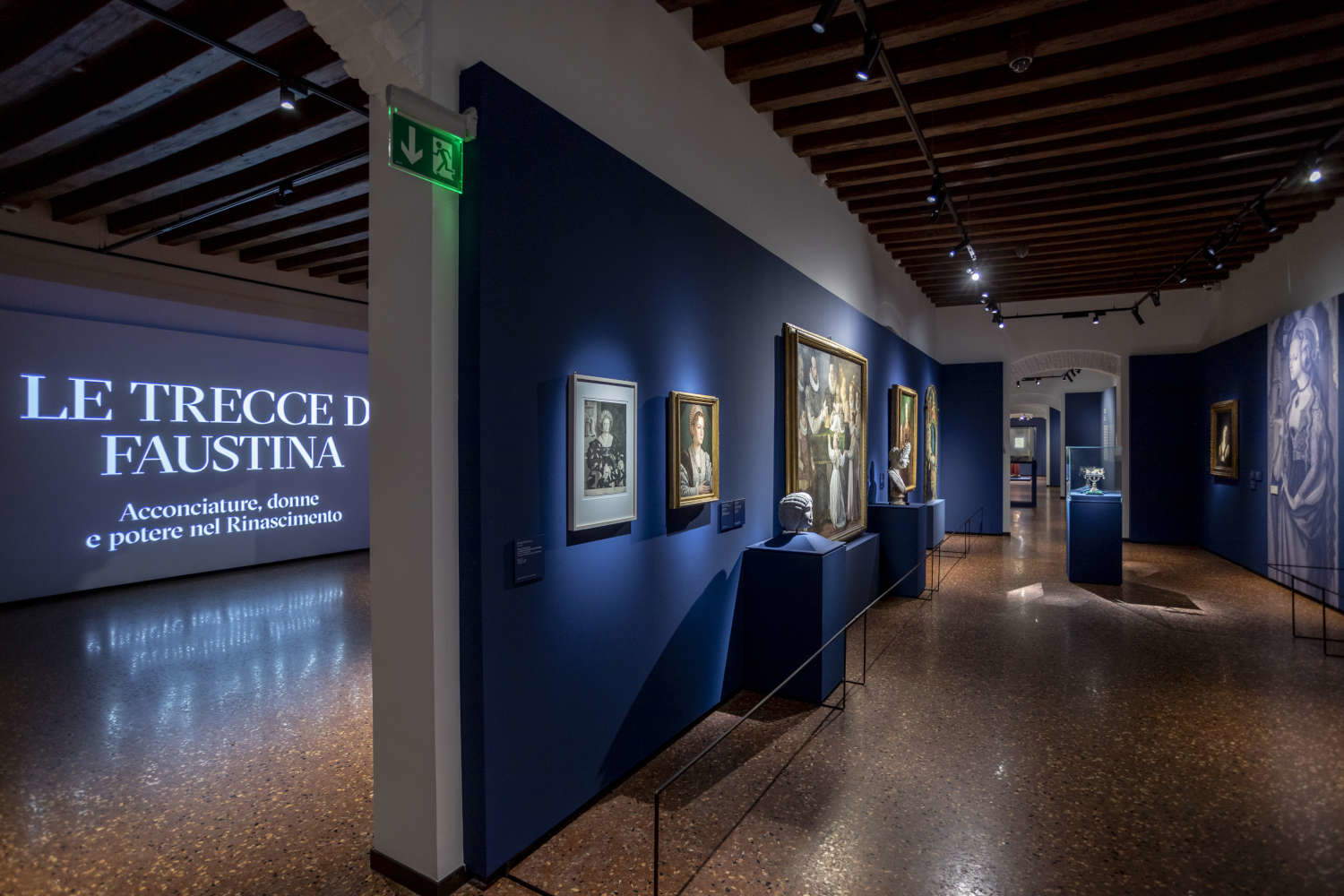
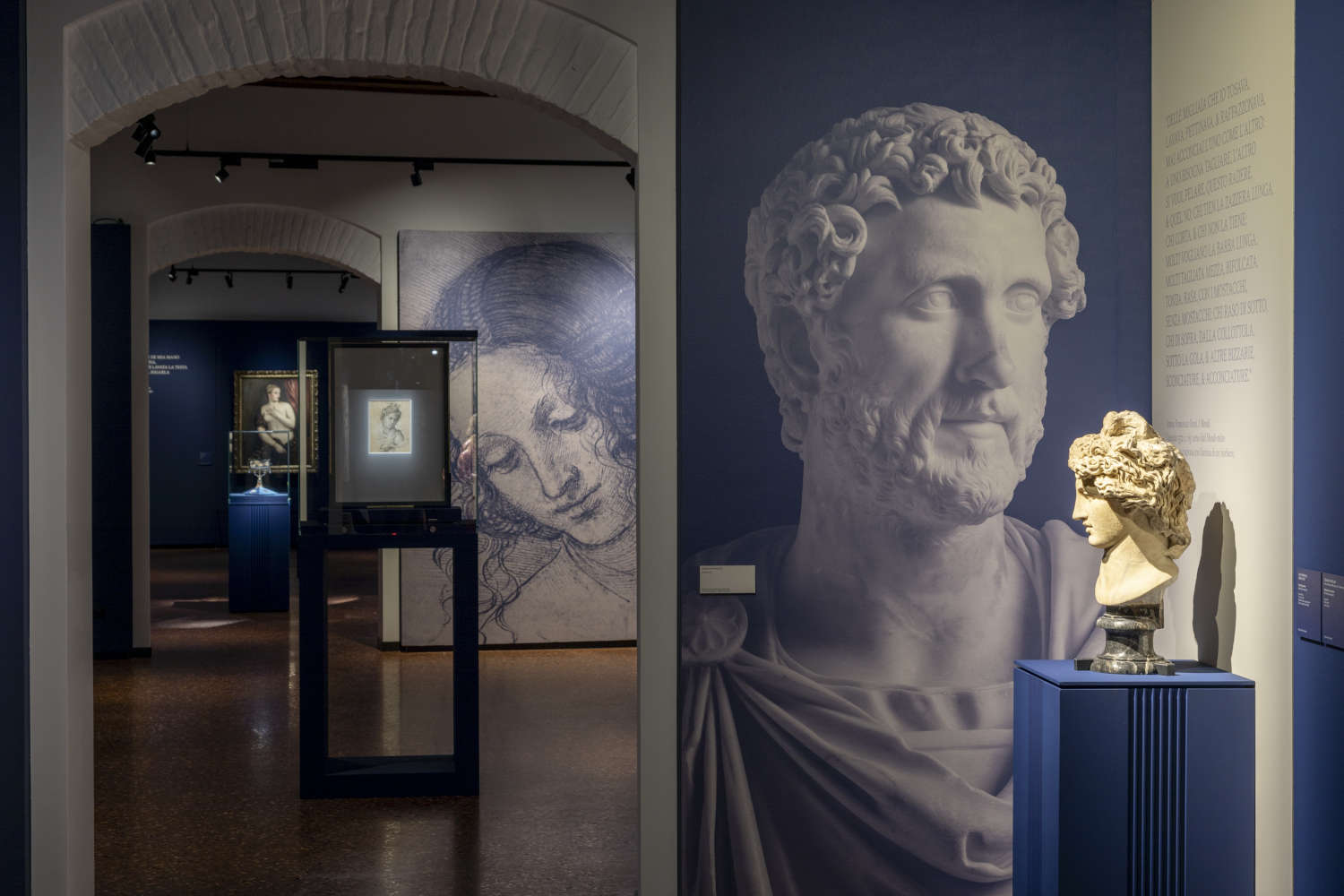
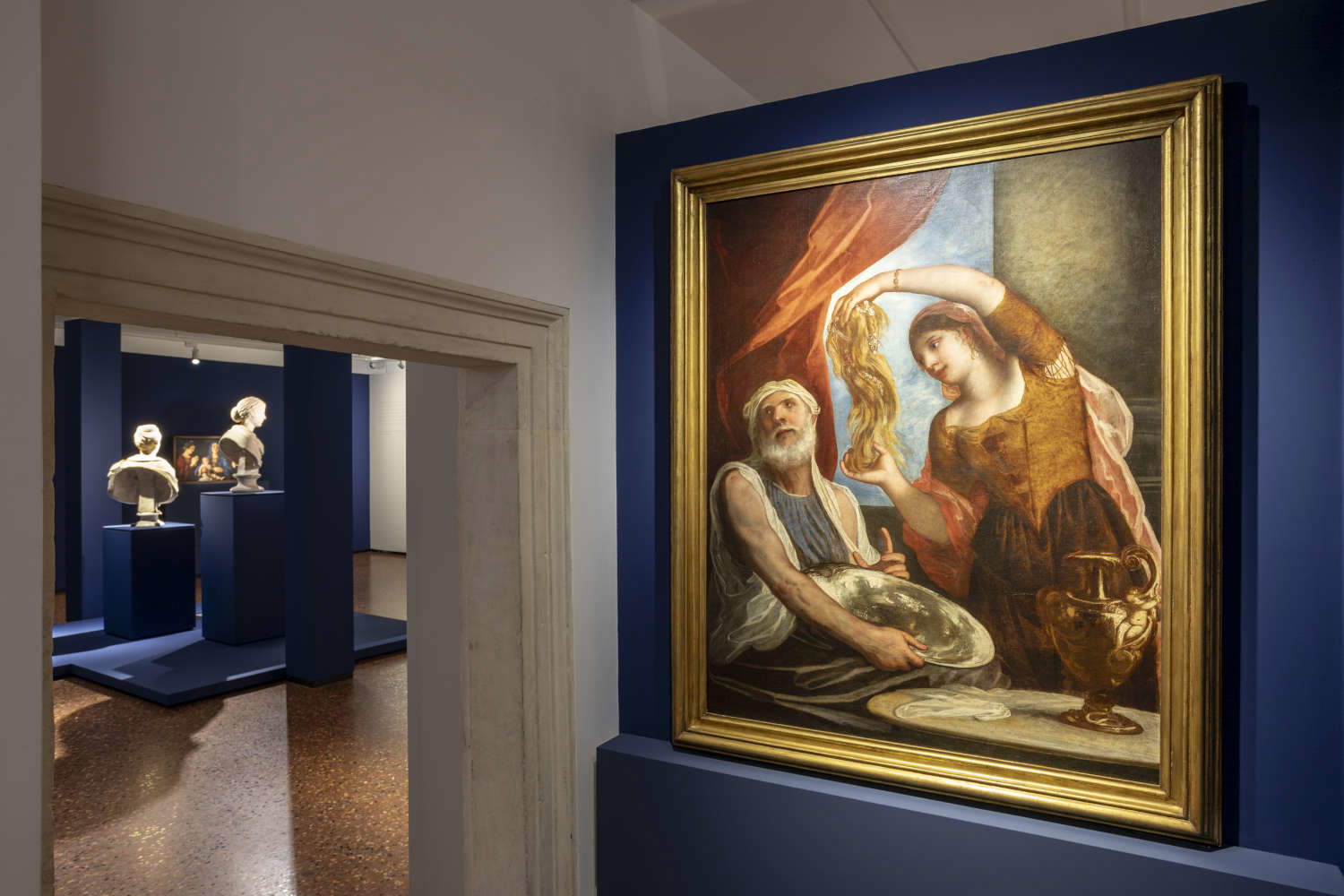
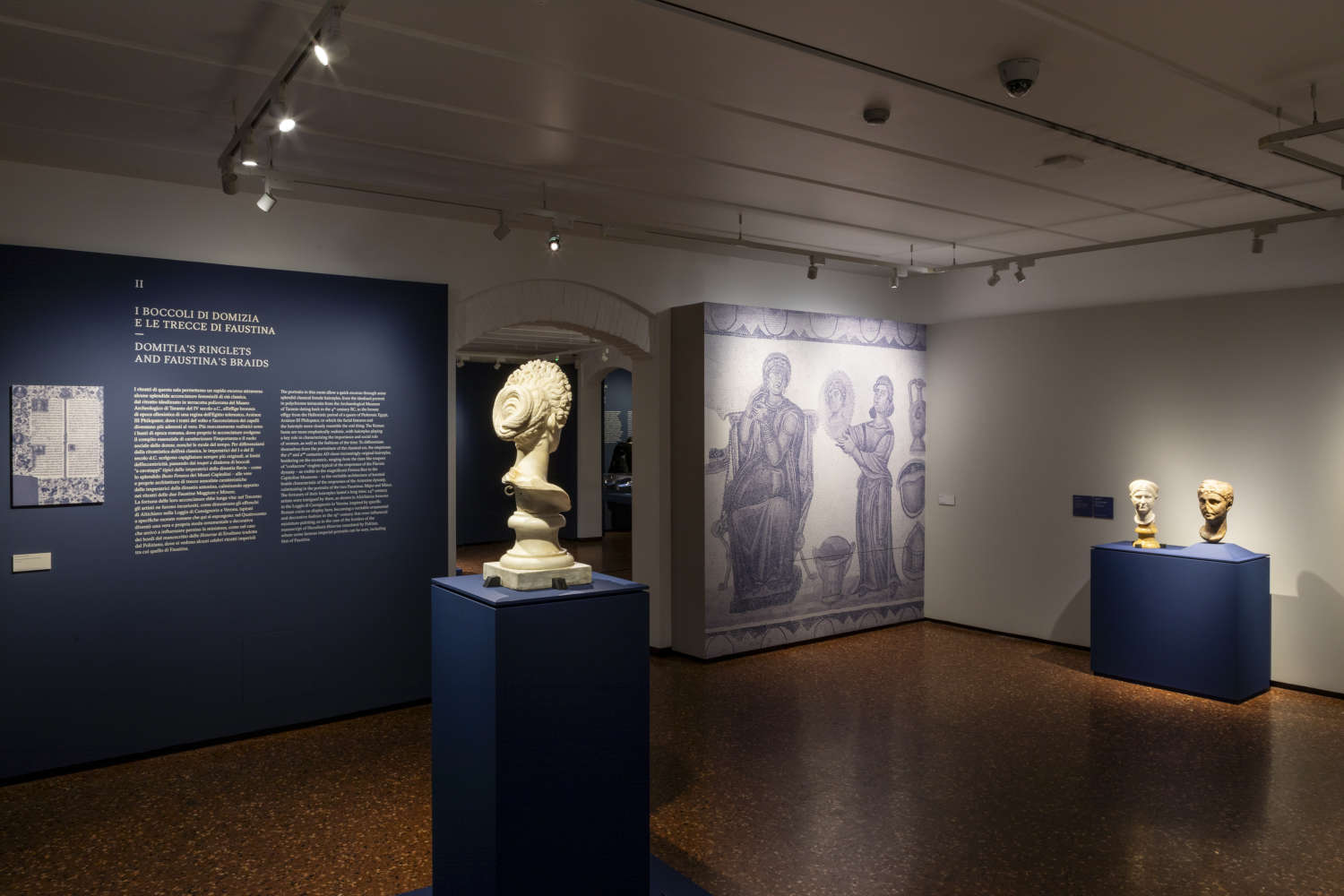
The itinerary unfolds through eight rooms. After a prologue dedicated to the theme of “Berenice’s hair,” the first room recounts the rediscovery of the portrait of Faustina Maggiore and her very particular hairstyle: a portrait and hairstyle that interested many great 15th-century artists (Lorenzo Ghiberti, Filarete, Andrea Mantegna, Giovanni Bellini). The second room briefly traces the history of female portraiture in Greek and Roman art, showing the great variety of hairstyles chosen by ancient women. The third room shows the liberation of women’s hair, achieved in the 15th century also thanks to the prestige of classical models. The fourth room offers a dutiful and inevitable comparison with men’s hairstyles, which, no less than women’s, were the product of the recovery of classical models combined with more modern sensibilities. The fifth room traces Michelangelo’s manifest interest in the depiction of women’s hair, examining in particular the drawings with “divine heads” and the invention of Leda. The sixth room considers hairstyles as evidence of women’s new visibility in society and their ability to express codes of costume adapted to very different contexts, from courts to brothels. The seventh room, on the other hand, will be devoted to the attention shown by cinema to women’s hairstyles, ancient and modern. The eighth and final room will document how Faustina’s hairstyle - the red thread of the exhibition - continued to exert great fascination even in the neoclassical age and, in particular, in the portraiture of Antonio Canova.
The exhibition space brings together a selection of portraits of female protagonists of the Renaissance, including Lucrezia Borgia, Isabella d’Este and Eleonora da Toledo, and will explore the expressiveness of hairstyles in official portraiture, highlighting how women themselves used them to propose cultural values and role models.
At the same time, the exhibition aims to raise awareness of the material culture of the time in order to specify the artists’ contribution. Are the hairstyles we see in the paintings purely imaginary fantasies or precise representations of the fashion of the time? How did creativity manifest itself in everyday hairstyles through the use of wigs, hairpieces, and invisible constructions? Can we speak of reality and fiction for Renaissance hairstyles, or are these two aspects inextricably linked?
At the end of the tour, visitors will have not only reflected on these aspects, but also rediscovered the surprising roles of hairstyles in the Renaissance. Far from being just female cosmetic concerns or mere artist’s curiosities, hairstyles should be considered the links of a “total” culture, the Renaissance, where moral, social, religious and physiological beliefs were intertwined, reinforcing each other.
For all information, you can visit the official website of the Gallerie d’Italia.
 |
| An exhibition in Vicenza explores women's hairstyles of the Renaissance |
Warning: the translation into English of the original Italian article was created using automatic tools. We undertake to review all articles, but we do not guarantee the total absence of inaccuracies in the translation due to the program. You can find the original by clicking on the ITA button. If you find any mistake,please contact us.





























